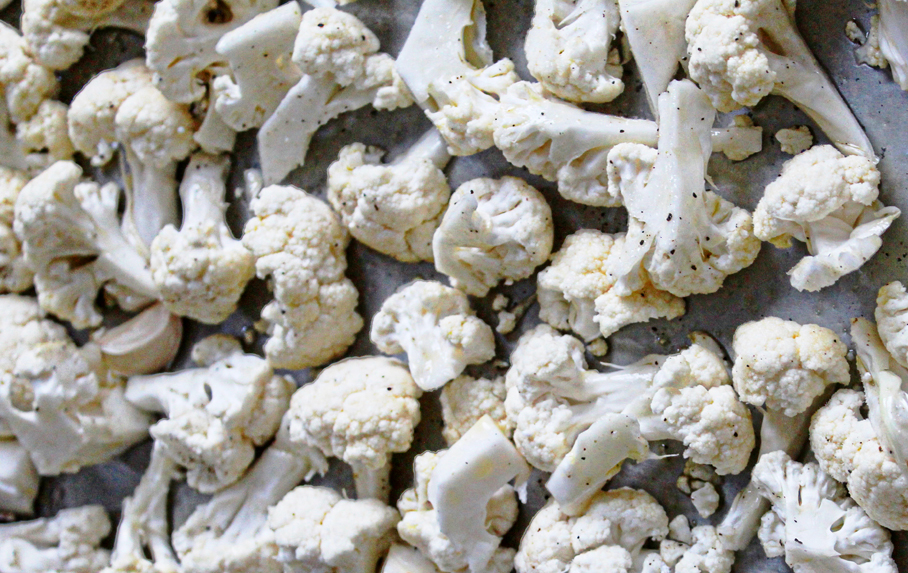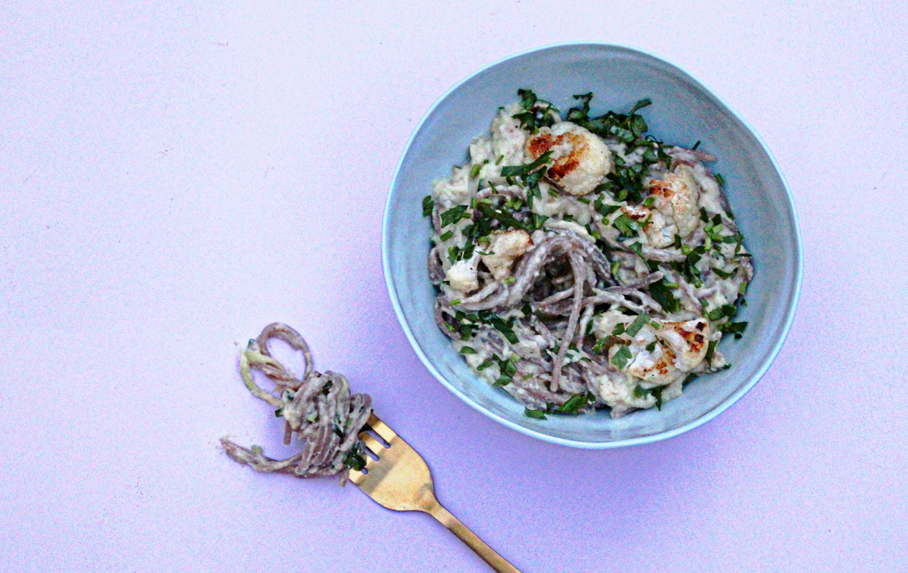Superfood is a total buzz word, matcha powder, medicinal mushrooms, acai berries and chia seeds are all that, but let’s not forget the nutritional prowess and vibrant hues of things like broccoli, tomatoes and pumpkin! Good health really can be as simple as it is to get caught up in the clever marketing of new health foods.
Remember the vegetable you always left on your plate at the dinner table as a kid? If it wasn’t brussels sprouts, chances are that it was probably cauliflower; funnily enough, the two are from the same botanical family! There’s something about this cruciferous veg that just isn’t appreciated before the age of about 16. Perhaps its the sulphuric taste and smell, the very thing that makes cauliflower so very good for you! Noted in literature during the 1st century AD, Roman philosopher Pliny the Elder wrote; “of all the varieties of cabbage the most pleasant-tasted is cauliflower” and we think he was onto something.

Fun Ways to Enjoy
Often the least sexy vegetables can really surprise us, who would have thought that bulbous and blonde cauliflower could be both delicious and full of nutritional bite! Most often associated with roast dinners, cheesy bakes, or sitting sadly steamed on a plate, let’s have a quick lesson on the great potential cauliflower has to offer.
While raw, cauliflower is chalky and dry, but with heat, from a hot oven, a flaming grill or a steaming basket, its texture is completely transformed. Cooked cauliflower becomes a creamy blank canvas for pasta sauce, soup, risotto, mash, hummus and other dips. A whole-roasted cauliflower is a well-loved favourite too – add some minced garlic, curry powder, olive oil, lemon zest and sea salt and bake for 45 minutes for a real vegetable show-stopper.
The low-carb food trend has carved the way for recipes that utilise steamed cauliflower in desserts like brownies and cheesecake! This goes to show the wonderful potential of this nude veg!
“Often the least sexy vegetables can really surprise us”
Nutrient Content
Cauliflower by definition is absolutely a nutrient-dense vegetable. Across the board, it contains a spectrum of vitamins and minerals, including magnesium, choline, potassium, phosphorus, manganese, vitamin C, vitamin K, vitamin B6 and folate . While there is no singular nutrient that stands out most when it comes to Cauliflower, its variety of nutrients make it a really worthwhile choice.
Choline is a noteworthy nutrient, due to the role it plays in brain health. Choline is a precursor to acetylcholine, which is a key neurotransmitter involved in the body’s sleep/wake cycle, our moods, attention-span, learning and memory. Choline is also involved in the metabolism of amino acids and nucleic acids that relate directly to our energy levels and mental health. Pregnancy demands a greater supply of choline; it plays a pivotal role in preventing neural tube defects and brain development in utero.
Noteworthy Superpower
Everyday, we expose our bodies to a huge amount of chemicals and toxins; the city air, chemicals from cleaning products, cosmetics and skincare, plastic containers and drinking bottles, water pollution, etc. It is the role of the liver to assist the body with detoxification of these substances, and although doing so is innate, various foods, herbs and nutrients can give the liver a thoughtful helping hand.

Cauliflower is rich in sulphorophane, an organic compound that gives cauliflower and its cruciferous family members their distinct bitter taste. Sulphorphane is a known activator of the second phase of liver detoxification, where toxic chemicals ‘conjugate’, or come together in preparation for removal . It’s incredible to think about what the food you eat is doing on a cellular level! It’s a whole lot more complicated and interesting than digestion alone.






